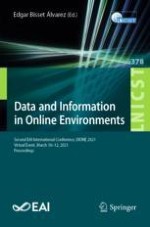This book constitutes the refereed post-conference proceedings of the Second International Conference on Data Information in Online Environments, DIONE 2021, which took place in March 2021. Due to COVID-19 pandemic the conference was held virtually.
DIONE 2021 presents theoretical proposals and practical solutions in the treatment, processing and study of data and information produced in online environments, the latest trends in the analysis of network information, media metrics social, data processing technologies and open science.
The 40 revised full papers were carefully reviewed and selected from 86 submissions. The papers are grouped in thematical sessions on evaluation of science in social networking environment; scholarly publishing and online communication; and education in online environments.
